Welcome to the final part of my trip to Sweden series! This post covers the last two days when we even got to see some snow!!
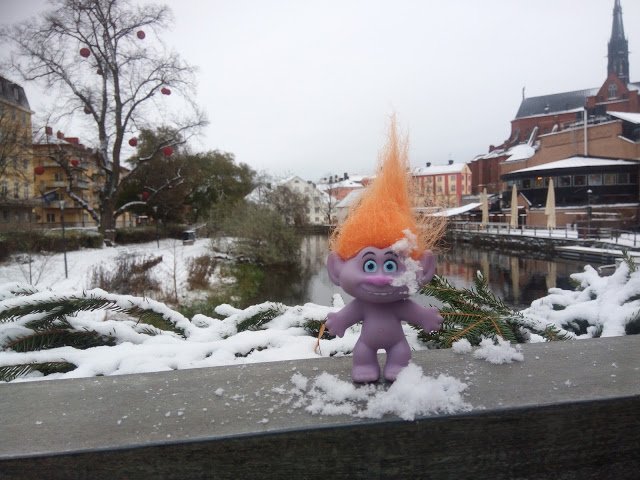
The town was really beautiful on those days!

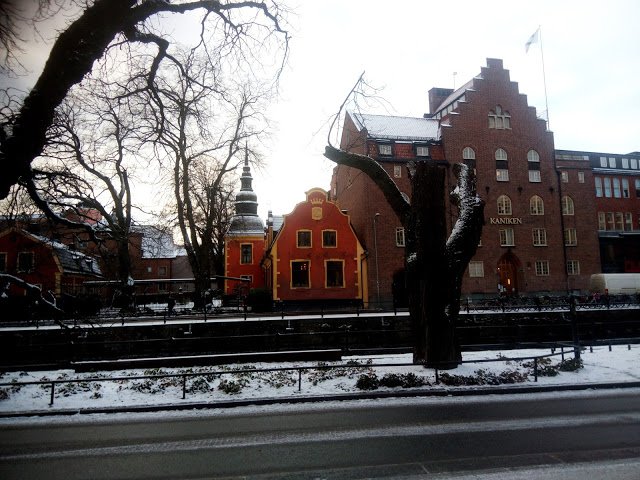
On our last day we visited the department of Geology, where our friend works, we also entered the new building of administration. I really thought I was in the movie "Passengers", the whole design and architecture was so futuristic. I was quite disappointed to make the comparison with greek university facilities (our buildings are so neglected and badly maintained).
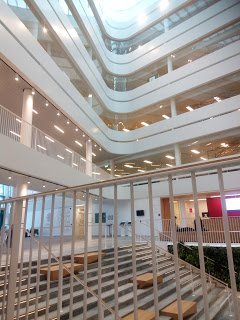

This university is so cool, in the Department of Geology they even got a piano in their lounge (next to the desert rose I showed you in another post) and anyone can play it after 17:00:
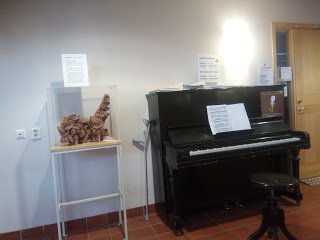
Our friend gave us a tour and showed us the mineral collection and some of their labs (unfortunately, I didn't take any photos of the equipment). He also explained how they prepare the specimens for examination, he showed us the machinery they use for cutting and where they keep their samples.


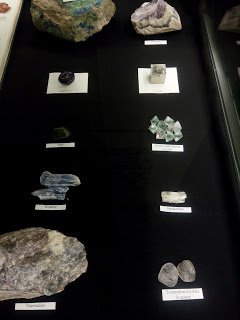
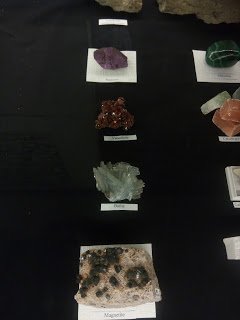
I laughed when I heard that his supervisor's last name is Troll! Look, I even got a photo to prove it:

Let's give some information on what this collection is about:
Minerals are natural, inorganic solids with a fixed chemical composition and a crystalline (systematic and repeating) internal structure. Don't mistake them for rocks, rocks don't have a fixed composition and may include different minerals and mineraloids. There are almost 5,000 different minerals on the planet. In order to identify them we take in mind several physical properties like:
- Hardness: Depends on the strength of the bonds inside it and is measured in the Mohs scale (starting from 1 for very soft minerals and reaching 10 for the hardest ones, like diamond).
- Specific gravity: This is the density of the mineral (you can find it by dividing the mass with its volume, Kg/m3).
- Cleavage: How easily can the mineral break and in what ways.
- Lustre and diaphaneity: The way which a mineral refelcts light and how easily can light pass through it.
- Color: It depends on the elements of a mineral.
- Taste
- Radioactivity
Why study them?
Because geologists try to figure out how our planet evolved by studying the different types of minerals and rocks. This knowledge not only helps us understand where we came from, but also what needs we could cover using all these valuable resources mother Earth provides us with.
Uses
Minerals are widely used and depending on their structure and properties they find application in various fields of human activity. Some examples are:
Aluminum: A metallic element deriving from Bauxite ore and there is plenty of it in the eart's crust. Aluminum is used in electrical, automobile and airplane industry, bottling, canning and building.
Asbestos: Asbestos fibers are strong, flexible, chemically inert and heat resistant, therefore we use them in fireproof fabrics. They are dangerous for your health, so you must avoid breathing them in. Among others, they are used for yarn, cloth, to make friction products, asbestos cement pipes and sheets, coatings and compounds.
Bismuth: It is a non-toxic and relatively inert metal. It is mostly used in alloys, and in pharmaceuticals, cosmetics and chemicals.
Halite: It is actually our well-known salt.
Lead: A mineral used in batteries, construction, ceramics, ammunition and nuclear shielding.
Lithium: Used for in batteries, cell phones and computers. (Remember what we said about lithium in the last bizarre phenomenon post?)
Quartz: Famous for its piezoelectric properties, quartz is used in glass, abrasives, paints, refractories and precision instruments, oscillators and wave stabilizers. There are various forms of quartz like amethyst, rose quartz, and smoky quartz.
Wanna see something cool minerals can do?
Triboluminescence! The term describes the light produced when a material is subjected to friction, breaking or crash. The light produced is usually white or orange, but we can get other colors as well as wavelengths non-detectable by human eyes. Scientists haven't got to understand how it works but there are two theories so far:
- It's like lightning: Electrical current travelling through the material causes the gas trapped within it to glow with little electrical discharges.
- Exciting electrons: Friction or crashing transfers energy to the molecules and excite their electrons, when they return to their original state they release photons.
Check this video for an demonstration:
References
wikipedia.org
geology.com
scienceviews.com
*All images by @ruth-girl

Thank you for being here and reading this. If you like my writing, you can visit my blog for more ;)
Recent posts from @ruth-girl:
* Did You Watch Tonight's Supermoon?
* La Petite Fille De La Mer - A Short Story
* A Taste Of Sweden (Part 4 - Stockholm, Butterfly House Haga Ocean)
* Bizarre Natural Phenomena Vol.34 - A Salt Desert (Salar De Uyuni)
* Cyclone Dahlia And An Amazing Lightning Show!
* Steemeet #2 - Athens! We Are Waiting To See You There!
Special thanks and mentions:
Until my next post,
Steem on and keep smiling, people!


